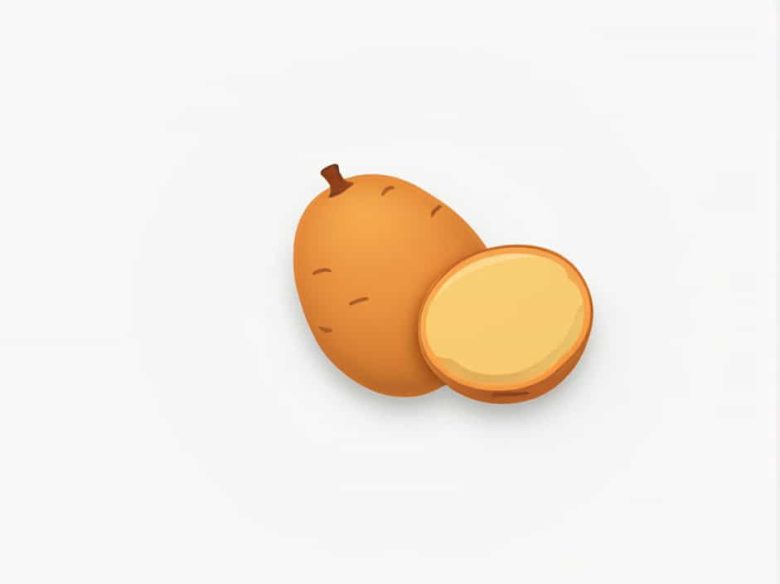The potato (Solanum tuberosum) and sweet potato (Ipomoea batatas) are two widely consumed crops that share some similarities but also have distinct differences. One of the key biological concepts related to these two plants is the idea of analogous organs.
Although both are underground storage organs they are structurally and developmentally different. The potato is a modified stem (tuber) while the sweet potato is a modified root (tuberous root). This topic explores their anatomical differences functions and why they are considered analogous organs.
What Are Analogous Organs?
Analogous organs are structures in different species that perform similar functions but have different evolutionary origins. Unlike homologous organs which have a shared ancestry but may serve different purposes analogous organs arise through convergent evolution meaning they develop independently to fulfill a similar function.
In the case of potatoes and sweet potatoes both function as storage organs for nutrients but originate from different parts of the plant.
Potato: A Stem Tuber
1. Structure of a Potato
The potato is a stem tuber which means it is a modified stem that grows underground. It has the following characteristics:
- Presence of buds (eyes): The small indentations on the surface of a potato are called “eyes” which can sprout and grow into new plants.
- Node and internode structure: Since it is a stem it has a typical stem-like structure with nodes and internodes.
- Chlorophyll development: When exposed to light a potato can turn green due to the presence of chlorophyll a characteristic of stems.
2. Function of a Potato
The main function of a potato tuber is nutrient storage particularly starch which is used by the plant for energy during unfavorable growing conditions.
3. Growth and Reproduction
- Potatoes reproduce vegetatively through tuber propagation.
- The “eyes” of the potato can grow into new shoots forming a new potato plant.
Sweet Potato: A Tuberous Root
1. Structure of a Sweet Potato
Unlike the potato the sweet potato is a modified root meaning it develops from the root system rather than the stem. Key features include:
- Lack of nodes and internodes: Since it is a root a sweet potato does not have eyes or buds.
- Root hairs and fibrous connections: It remains connected to the main plant via fibrous roots.
- No chlorophyll formation: Sweet potatoes do not turn green when exposed to light as they lack chlorophyll.
2. Function of a Sweet Potato
Similar to the potato sweet potatoes store starch and other nutrients to support plant growth during periods of stress. However since it is a root it absorbs water and minerals from the soil which the potato (a stem) does not do.
3. Growth and Reproduction
- Sweet potatoes reproduce through adventitious roots which can generate new plants when cut and replanted.
- Unlike potatoes they do not rely on buds for growth.
Why Are Potatoes and Sweet Potatoes Considered Analogous Organs?
1. Similar Functions
- Both store starch and serve as an energy reservoir for plant survival.
- They allow the plant to survive unfavorable conditions such as drought or cold seasons.
2. Different Origins
- Potatoes originate from the stem making them stem tubers.
- Sweet potatoes originate from the root making them tuberous roots.
- Their development follows different biological pathways despite their similar roles.
3. Evolutionary Adaptation
- Convergent evolution led to their similar function in storing food even though they evolved from different plant structures.
- They independently adapted to underground storage as a survival mechanism.
Key Differences Between Potato and Sweet Potato
| Feature | Potato (Solanum tuberosum) | Sweet Potato (Ipomoea batatas) |
|---|---|---|
| Organ Type | Stem (Tuber) | Root (Tuberous Root) |
| Presence of Eyes (Buds) | Yes grows from buds | No grows from root sprouts |
| Nodes and Internodes | Present | Absent |
| Chlorophyll Formation | Can turn green in sunlight | Does not turn green |
| Reproductive Method | Vegetative propagation through tubers | Grows from cuttings or root sprouts |
| Function | Stores starch supports new shoots | Stores starch absorbs water and nutrients |
Importance of Understanding Analogous Organs in Agriculture
1. Crop Improvement
Understanding the difference between stem and root modifications helps in breeding better varieties with improved yield and disease resistance.
2. Storage and Processing
- Since potatoes and sweet potatoes have different structures they require different storage conditions.
- Potatoes are susceptible to sprouting whereas sweet potatoes can be stored for longer periods without sprouting.
3. Nutritional and Culinary Uses
- Both are rich in carbohydrates but sweet potatoes have more vitamin A due to their orange pigment (beta-carotene).
- Potatoes and sweet potatoes are used in diverse cuisines worldwide from fries to baked dishes.
Potatoes and sweet potatoes are classic examples of analogous organs in plants. Despite their similar function in food storage they have distinct structural differences with the potato being a stem tuber and the sweet potato being a tuberous root.
Their evolutionary adaptation to underground storage showcases the fascinating process of convergent evolution where unrelated structures develop to serve the same purpose. Understanding these differences is essential for agriculture botany and food science helping us optimize cultivation storage and nutritional benefits.



